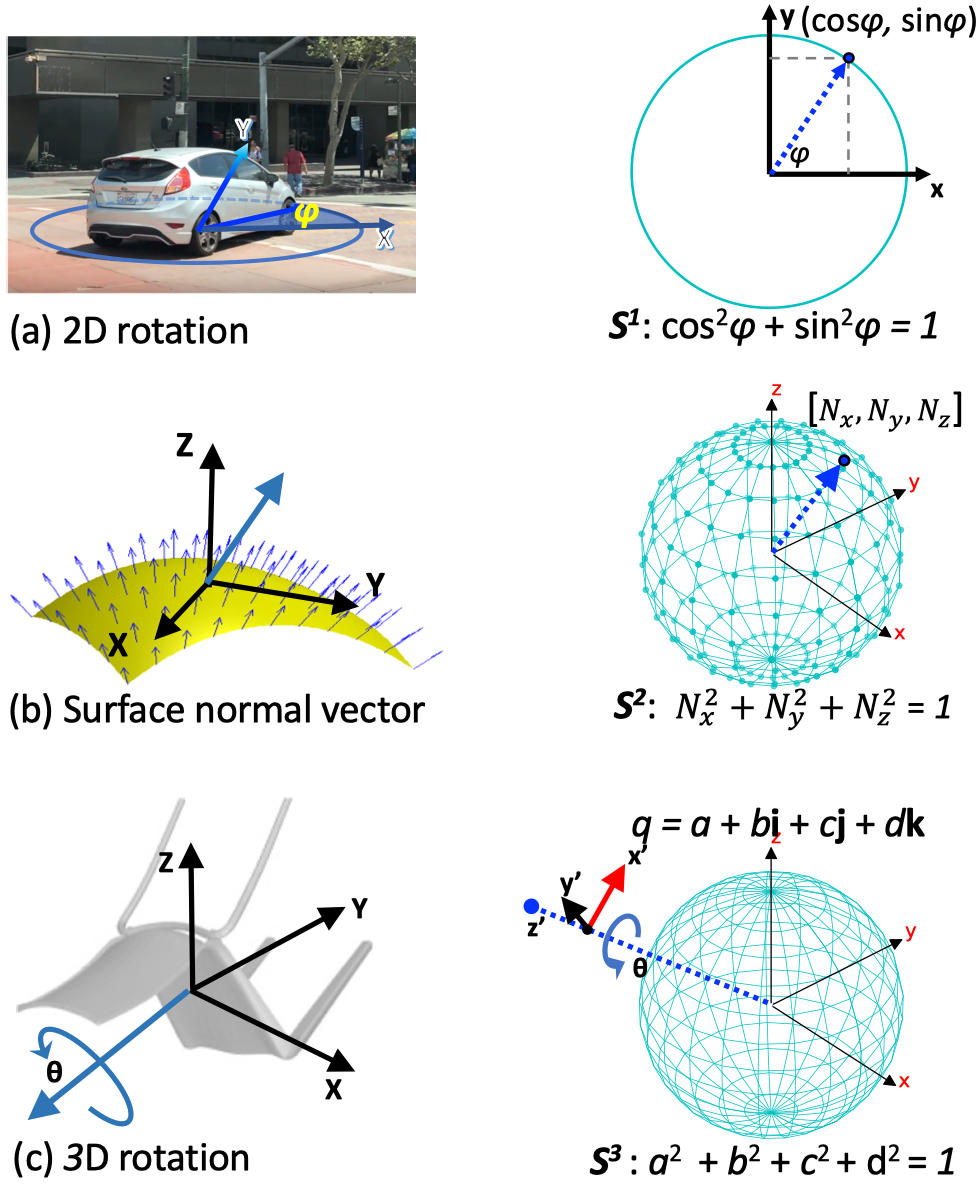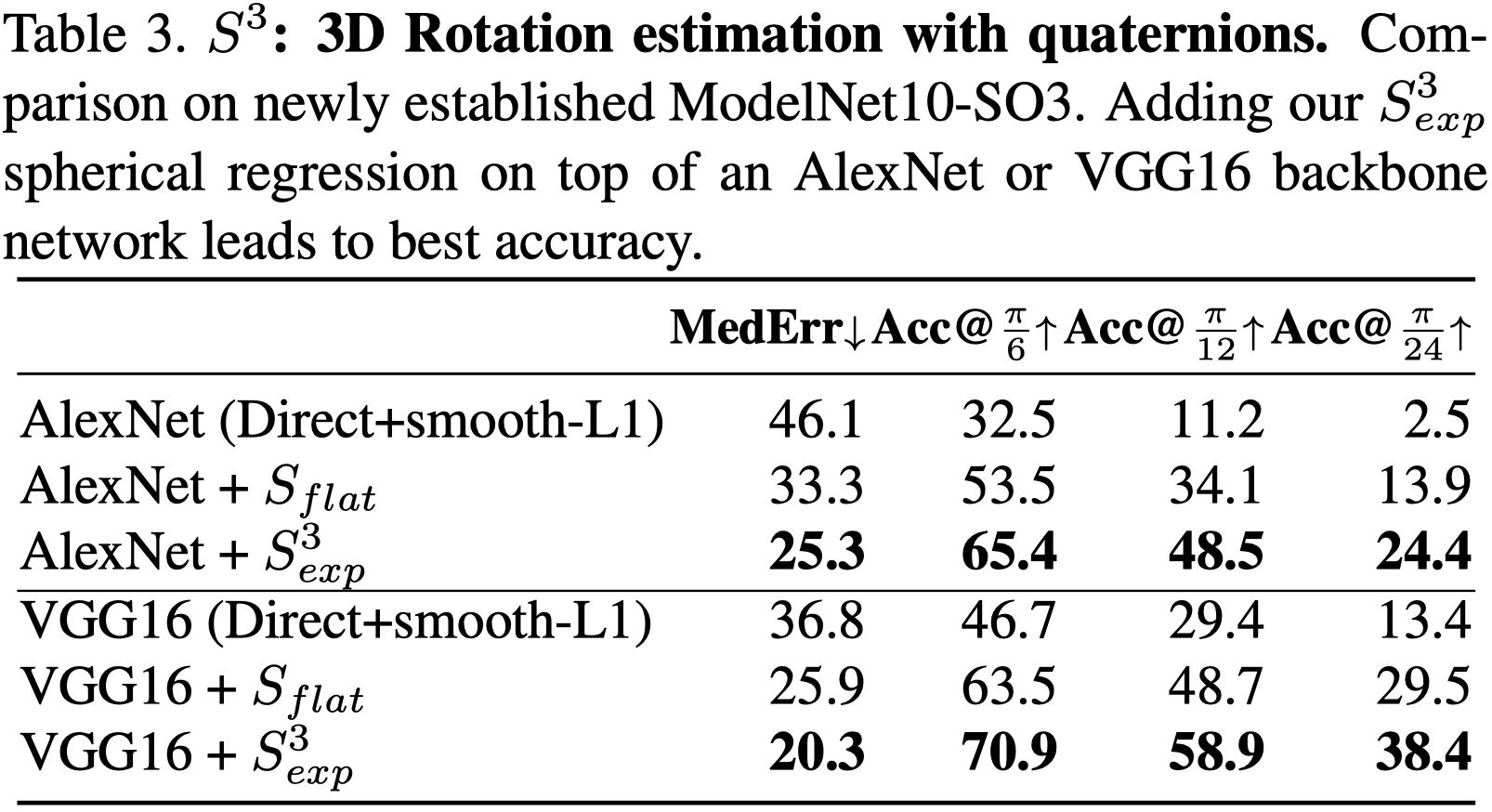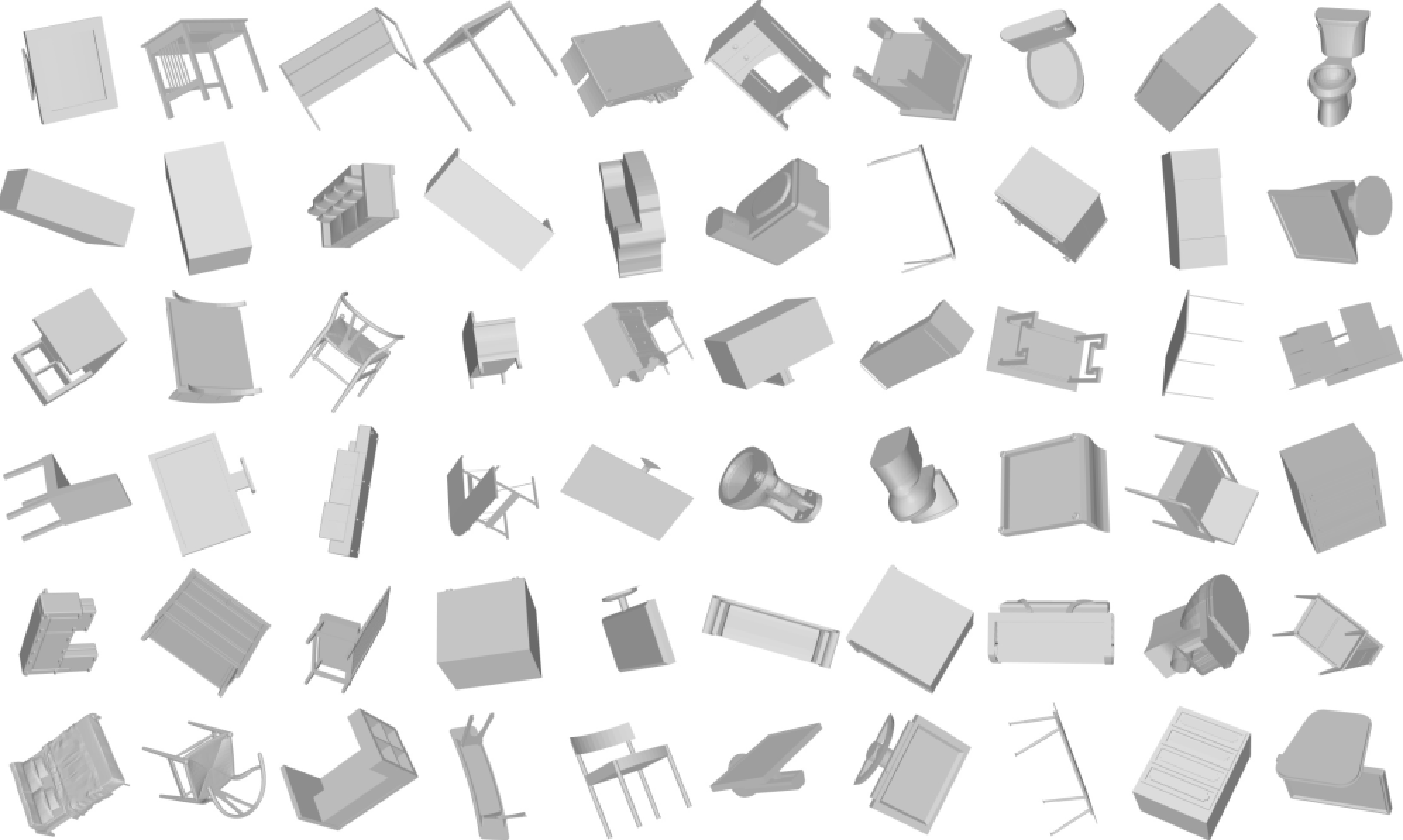This code contains 3 parts:
| Task | Code | Dataset |
|---|---|---|
| Viewpoint Estimation | S1.Viewpoint [*] | Pascal3D+ |
| Surface Normal Estimation | S2.Surface_Normal [*] | NUY-v2 |
| 3D Rotation Estimation | S3.3D_Rotation | ModelNet10-SO3 [new] |
[*] To be cleaned up and released soon.
You can find paper here.
Many computer vision problems can be converted into a
Having gradient constrained, we stablize the training and thus lead better performance.
Variance of the average gradient norm
- (I) Direct regression with smooth-L1 loss. It may cause the output to no longer follow unit
$\ell_2$ norm. - (II) Regression with
$\ell_2$ normalization$\mathcal{S}_{flat}$ . - (III) Regression with
$\mathcal{S}_{exp}$ (this paper).
We introduce a new dataset, ModelNet10-SO3, composed of images of 3D synthetic renderings. ModelNet10-SO3 is based on ModelNet10, which contains 4,899 instances from 10 categories of 3D CAD models. In ModelNet10 the purpose is the classification of 3D shapes to one of the permissible CAD object categories. With ModelNet10-SO3 we have a different purpose, we want to evaluate 3D shape alignment by predicting its 3D rotation matrix w.r.t the reference position from single image. We construct ModelNet10-SO3 by uniformly sampling per CAD model 100 3D rotations on SO(3) for the training set and 4 3D rotations for the test set. We render each view with white background, thus the foreground shows the rotated rendering only. The annotation of rotation is in format of quaternion.
- Image data is in lmdb format, and to be read by
pylibs/lmdb_util/imagedata_lmdb.py - Annotation of rotation is in quaternion, stored as a python dictionary (
ModelNet10-SO3/viewID2quat.pkl). - Download (2.4G)
# Example
python pylibs/lmdb_util/imagedata_lmdb.py path/to/ModelNet10-SO3/test_20V.Rawjpg.lmdb
- Upload the caffe imagenet pretrain weights: "pylibs/pytorch_util/libtrain/init_torch.py", there's caffe_models.
@INPROCEEDINGS{LiaoCVPR19,
author = {Shuai Liao and Efstratios Gavves and Cees G. M. Snoek},
title = {Spherical Regression: Learning Viewpoints, Surface Normals and 3D Rotations on n-Spheres},
booktitle = {Proceedings of the {IEEE} Conference on Computer Vision and Pattern Recognition},
month = {June},
year = {2019},
address = {Long Beach, USA},
pdf = {http://arxiv.org/abs/1904.05404},
abstract = { Many computer vision challenges require continuous outputs, but tend to be solved by discrete classification. The reason is classification's natural containment within a probability n-simplex, as defined by the popular softmax activation function. Regular regression lacks such a closed geometry, leading to unstable training and convergence to suboptimal local minima. Starting from this insight we revisit regression in convolutional neural networks. We observe many continuous output problems in computer vision are naturally contained in closed geometrical manifolds, like the Euler angles in viewpoint estimation or the normals in surface normal estimation. A natural framework for posing such continuous output problems are n-spheres, which are naturally closed geometric manifolds defined in the R^{(n+1)} space. By introducing a spherical exponential mapping on n-spheres at the regression output, we obtain well-behaved gradients, leading to stable training. We show how our spherical regression can be utilized for several computer vision challenges, specifically viewpoint estimation, surface normal estimation and 3D rotation estimation. For all these problems our experiments demonstrate the benefit of spherical regression. All paper resources are available at https://github.com/leoshine/Spherical_Regression. }
}




